There’s a Chilean saying that after God made the world, he had a bit of everything left over: mountains, deserts, forests, and coastlines. Instead of letting them go to waste, He put them all in one place: Chile.
It’s true; this narrow, skinny country—running 2,653 miles from north to south along the western edge of South America—has just about every type of environment: toothy mountain ranges, enchanting forests, stark and otherworldly deserts, crawling glaciers, and picturesque coastlines ranging from sandy beaches to misty fjords. The people who call these incredible landscapes home bring their own unique culture, cuisine, art, and history to each corner of this protracted nation, giving travelers the chance to squeeze a lifetime of adventure into one trip.
From exploring Martian landscapes in the north to spotting pumas in the south, these 15 experiences rank among the best things to do in Chile.
Things to do in Chile
1. Go wine tasting in Chile Wine Country
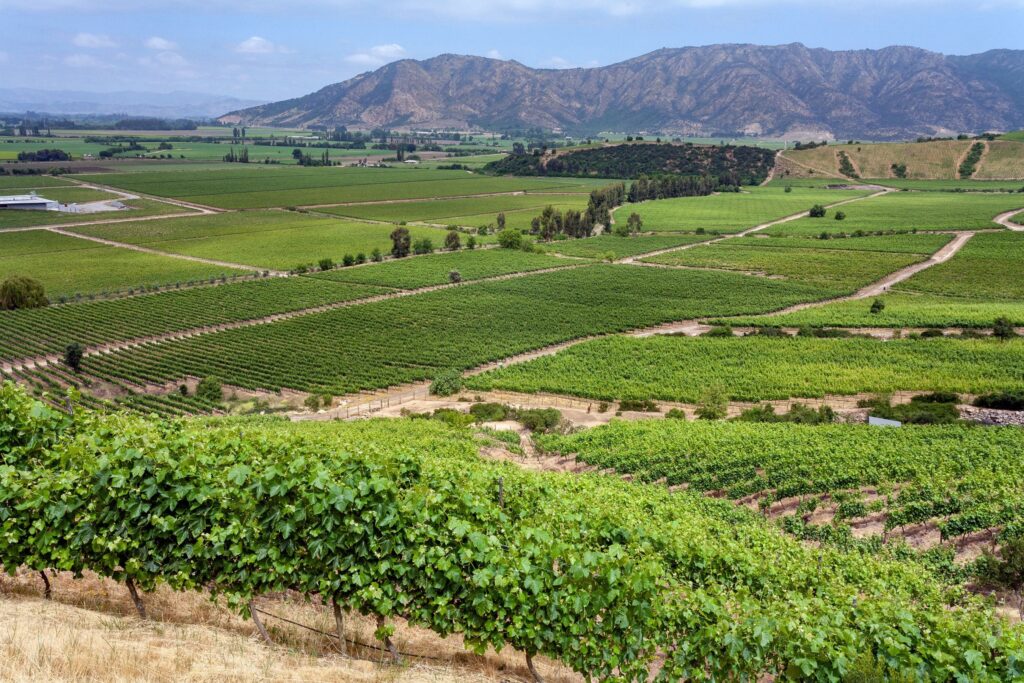
In central Chile, sandwiched between the Andes Mountains and the coast, the Mediterranean-style climate of Chilean Wine Country produces punchy red wines and crisp whites that are among the best in South America. There are ~1,200 wineries in distinguished wine valleys like Casablanca, Colchagua, and Maipo, where you can sip varietals like Chile’s flagship red, carmenere, while admiring sweeping views of patchwork vineyards framed by rolling hills.
- When to go: While most Chilean wineries are open for tours and tastings throughout the year, fall (March, April, and May) is the best time to visit. Not only are the vineyards awash in autumn colors, but many towns and vineyards host festive harvest events.
- What to taste: Chile grows familiar noble grape varieties like cabernet sauvignon and sauvignon blanc, but oenophiles should try some truly unique varieties that are hard to find elsewhere. Carmenere, which originated in France but was wiped out in the phylloxera plague of the late 1800s, is one such example.
- High design: Design lovers will have a field day in Chilean wine country; the area is full of avant-garde, boundary-pushing architecture. Two that spring to mind are the futuristic Vik Vineyards with its boulder-field entrance and the striking hillside winery at Clos de Apalta.
2. Explore Santiago
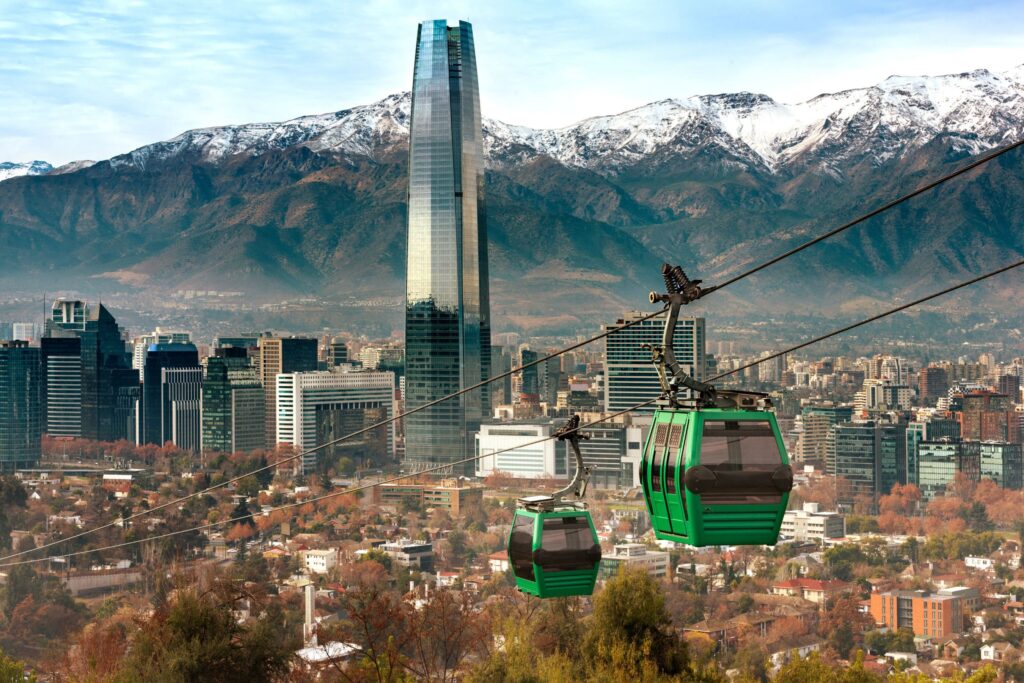
Nestled up against the Andean Cordillera, Chile’s capital city is a vibrant and cosmopolitan metropolis. The country’s largest gateway, Santiago, is the perfect introduction to Chilean history and culture with its historic neighborhoods, world-class museums, and friendly, welcoming locals. Its walkable city center makes it a joyful place to explore on foot. It’s also the seat of Chilean gastronomy, with award-winning restaurants and bars like Borago and Siete Negronis.
- Sky-high: For the best views of the city and the Andes, you have to go high. Head to the viewing decks of Gran Torre, the tallest skyscraper in South America; take a cable car to the top of Cerro San Cristobal; or visit the Baháʼí Temple at the base of the mountains that overlook the city.
- Cool barrios: Santiago is home to a delightful mix of old and new neighborhoods that showcase the city’s past and present. In the hip, artsy Lastarria and Bellavista areas, you’ll find funky street art, vinyl stores, and cool bars and restaurants. In the Paris-Londres district, classical buildings make you feel like you’ve been transported to Europe.
- Must-visit museums: Explore Chilean and South American history at some of Santiago’s finest museums, like The Museum of Pre-Columbian Art, which houses more than 3,000 artifacts from across the continent. The brutal history and legacy of the Pinochet dictatorship is chronicled at the Museum of Memory and Human Rights. At La Chascona, you can actually explore one of the three eccentric, art-filled houses of renowned Chilean poet Pablo Neruda.
3. Chow down on Chilean seafood
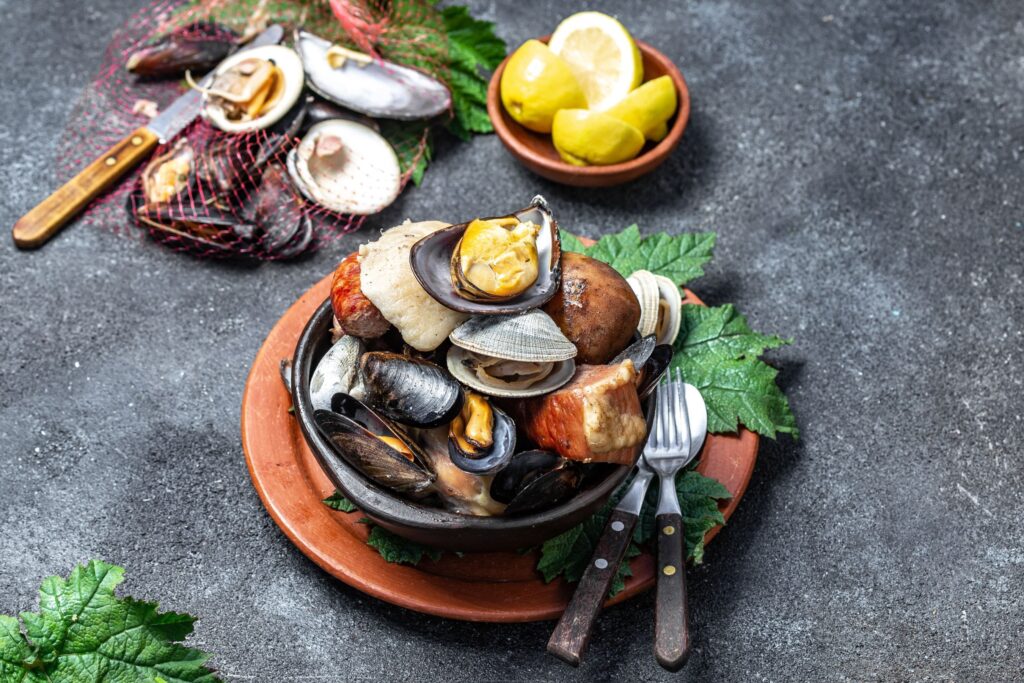
With its 2,653-mile-long coastline, it’s no surprise that seafood is a staple of Chilean cuisine. From north to south, travelers can find and sample a diverse range of fresh, local seafood, from fish to clams to crabs, as well as classic Chilean seafood dishes.
- The Chiloé archipelago is home to one of Chile’s best seafood dishes and traditions: curanto al hoyo. Similar to a clambake, a large, earthen pit is lined with nalca leaves, filled with shellfish like mussels and clams, chicken, pork, potatoes, and milcao (a traditional Chilote potato pancake), and then covered and cooked with heated rocks.
- In Valparaíso, toss back razor clams oozing with parmesan, share zesty ceviche, and eat catch-of-the-day fish like reineta while gazing at a bay dotted with anchored fishing boats and container ships. Once one of the most important port cities in South America, this coastal city is a seafood haven. Wander through the buzzy fish market or pop into any of the restaurants lining the port town’s cobblestone streets for a seafood lunch paired with white wine.
- The Chilean version of The Deadliest Catch, the frigid waters off the coast of southern Patagonia are home to massive centolla (southern king crabs) that are a staple of the Patagonian diet. At restaurants in Punta Arenas and Puerto Natales, tuck into savory dishes of chupe de centolla or crab casserole, with meaty chunks of crab meat mixed with cheese and bread.
4. Visit the Atacama’s otherworldly landscapes

The driest non-polar desert in the world, the landscapes of northern Chile’s Atacama Desert look like something from a different planet. Lunar valleys covered in snow-like salt crusts, gurgling geysers fed by geothermal activity, and glassy lagoons reflecting a sky that feels close enough to touch make this one of the most striking, unique places to visit—and certainly one of the best things to do in Chile.
- Moon walk: While it’s not actually the moon, it’s as close to a real lunar environment as you can find on Earth. (Literally, NASA tested some of its Mars-bound rovers in the Atacama.) Just outside the town of San Pedro de Atacama lies the Valley of the Moon, an extraterrestrial landscape of jagged red-rock ridges, sandy dunes, and salty plains that mimic the stark environments of the moon—and it’s just waiting to be hiked.
- Eyes to the skies: That feeling of being on another planet when exploring the Atacama is more apt than you may think. Its low humidity, lack of light pollution, high altitude, and 300-plus nights of clear skies a year make it one of the best places on Earth for stargazing and astronomy. Learn to read the constellations on stargazing tours. With some luck and good timing, travelers with a deep interest in astronomy might be able to visit the Atacama Large Millimeter Array (ALMA), one of the world’s most powerful telescopes, might be a possibility.
- Hot water: Sitting along the Pacific Rim of Fire, the ground under your feet in the Atacama is alive with geothermal activity. At the Tatio Geyser Field, the third-largest geyser field in the world, you can observe this hidden power in action as geysers erupt, fumaroles belch steam, and mud pots bubble with extreme heat. You can even experience the water yourself at the Puritama Hot Springs, a series of thermal pools in a nearby valley.
5. March with the penguins on Isla Magdalena
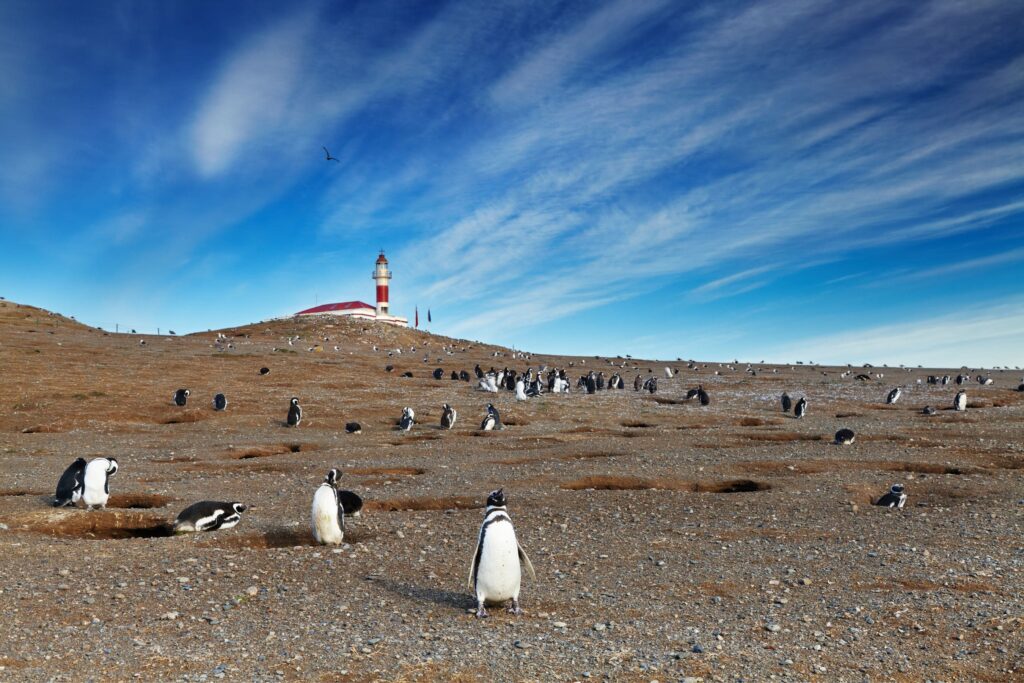
Live out your own march of the penguins on Isla Magdalena, a small, rocky island off the coast of southern Chile in the Strait of Magellan. Part of the Los Pingüinos Natural Monument, the island is home to one of Chile’s largest nesting colonies of Magellanic penguins (note: the famous film profiled emperor penguins) with around 60,000 breeding pairs. A two-hour boat ride from Punta Arenas, visiting the penguin colony is a great day trip from the Chilean mainland before or after spending time in Torres del Paine.
- Get up close and personal with penguins: Even though these adorable, flightless birds are a protected species, they’re accustomed to the tourists who come to see them. Wandering freely, the birds often come very close to the walking paths that cross the island, letting you get as close as possible.
- Respect the penguins: Even though the penguins aren’t shy and wander freely, allowing them to come right up to you, they’re still a protected species. You cannot touch or feed them, and it’s important to follow wildlife-viewing guidelines like not littering and giving animals plenty of space.
- When to go: This is a nesting colony, and consequently, the penguins don’t live on the island year-round. Viewable from October to March, the best time to see the penguins is in December and January during hatching season. This gives you the best chance to see cute chicks waddling around.
6. Embrace the artistry of Valparaíso
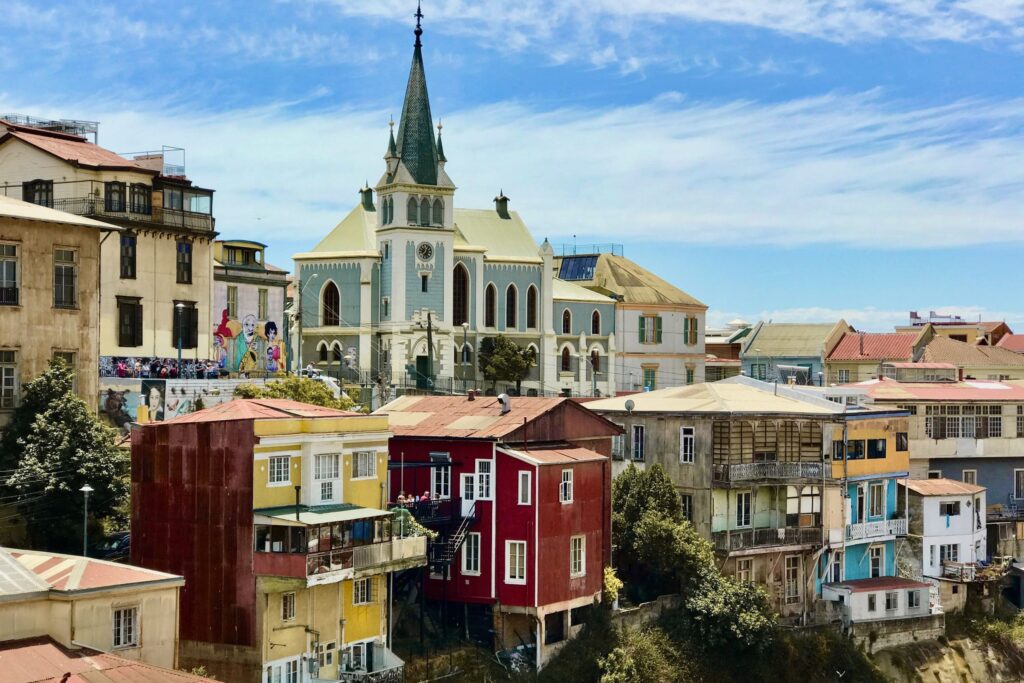
Once you’ve visited the coastal port city of Valparaíso, it’s easy to see how it earned its nickname, “Jewel of the Pacific.” From brightly painted houses hugging the hillsides to the eccentric street art covering every extra wall, the city is awash in vibrant color. Valparaiso has long been one of Chile’s most artistic and bohemian cities, inspiring artists of all mediums, from writers to painters, and you can tap into this creative spirit yourself during a visit.
- Take a street art tour: Although the main street art areas on Cerro Concepcion and Cerro Alegre are great to explore on your own, a private tour gives you an even deeper appreciation of the city’s street art scene. Led by an expert guide, identify different artists, learn about their techniques, and even find hidden gem murals and paintings off the main tourist trails.
- Get your graffiti on: Feeling inspired? You can add your own vision to the art-covered city walls and streets with the help of a local artist! Some Valparaíso-based artists host workshops and tours that include painting and graffiti lessons, giving you the chance to contribute your own mark.
- Visit the home of Pablo Neruda: Full of knick-knacks from his worldly travels and boasting a breathtaking view of the city and bay, Pablo Neruda’s former home-turned-museum La Sebastiana is a must-visit. Inside, you’ll glimpse into the life of the Nobel Prize-winning poet and the places that inspired him.
7. Photograph Chiloé’s colorful palafito houses
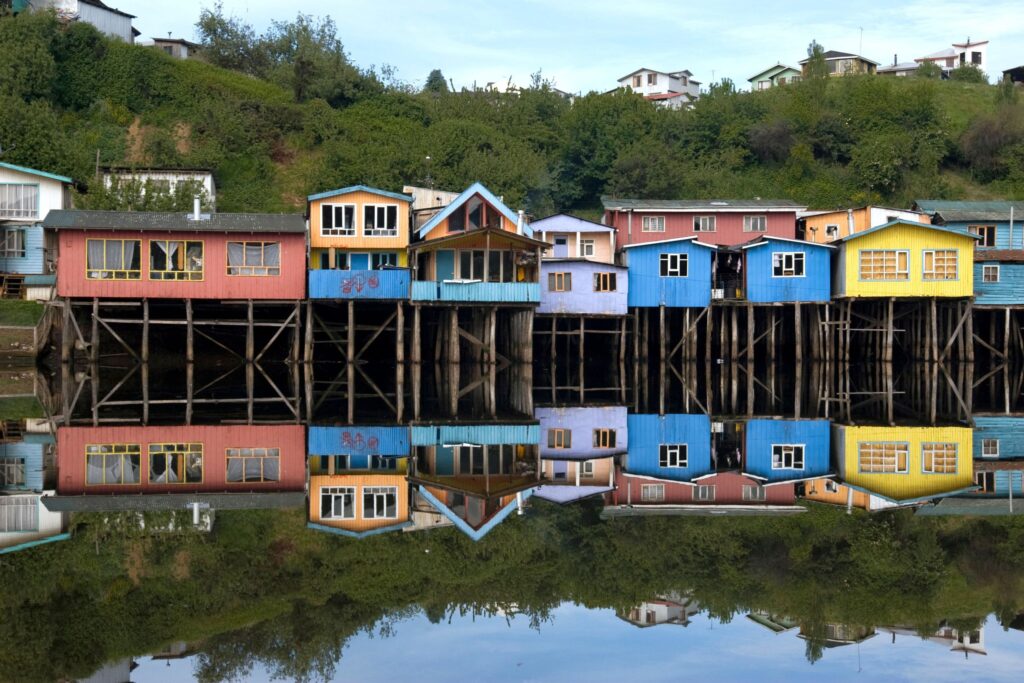
Valparaíso isn’t the only place in Chile with eye-catching, colorful homes. On the archipelago of Chiloé in southern Chile, the island’s bays and waterways are lined with palafitos, stilt houses, painted in vibrant colors reflected by the water underneath. Historically, these homes were first built in the nineteenth century and owned by fishermen for fast, easy access to the ocean. Many are still inhabited today. They’re also stunning living examples of Chilote architecture and culture and a must-see when visiting the islands.
- Although palafitos can be found throughout the islands, some of the most famous examples are found in Castro, the capital of Chiloé province. Several of the city’s bays are lined with these stilted, colorful houses, viewable for photographs from scenic viewpoints.
- Best palafito photo opps: Two of the best places to capture that classic picture of Chilote palafitos are the Mirador Gamboa in Castro, where the Gamboa River flows into the bay, and the Palafitos of Pedro Montt near the entrance to the city.
- Dine in a palafito: Although many palafitos are still occupied by locals, some have been converted into restaurants, stores, cafes, and even (basic) hotels.
8. Adventure in Cajon Del Maipo
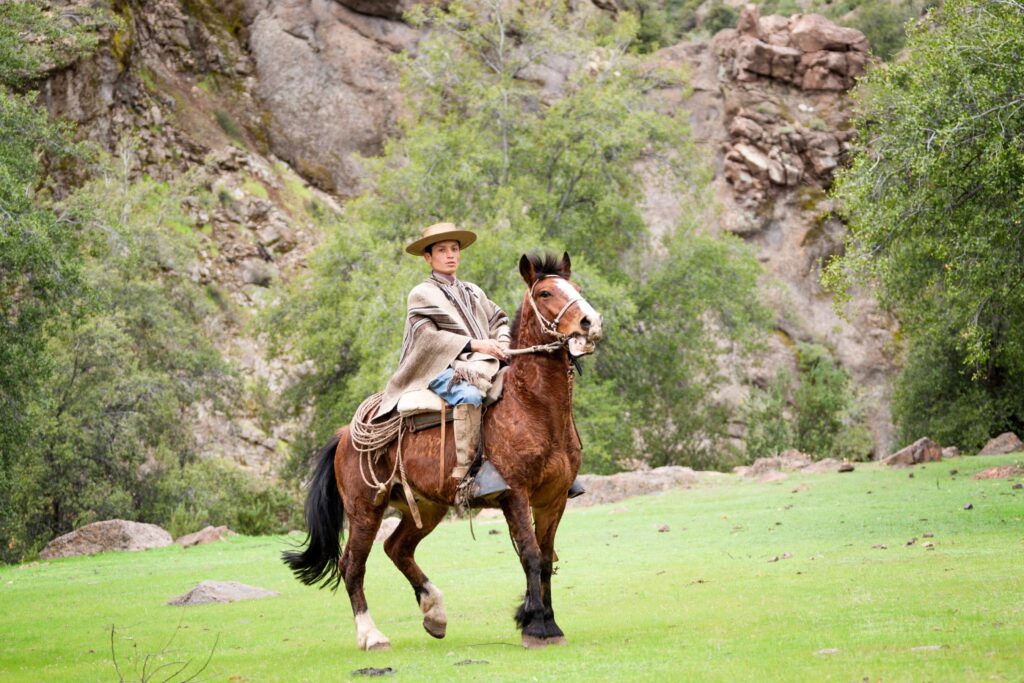
If you’re spending time in Santiago and need a break from the big city, outdoor adventure is just an hour away. Butting up against the mighty Andes Mountains, Santiago is only a short drive from the Cajon del Maipo Gorge, which makes for an easy and scenic day trip. Home to the El Morado National Monument, this outdoor adventure haven has glaciers, horseback riding, and hiking trails, and much more.
- Hike, bike, climb, and fish: Whatever your favorite outdoor sport is, you can find it in Cajon del Maipo. Cradled between snow-covered peaks, the El Yeso Reservoir offers fishing close to the capital, while numerous hiking trails within the National Monument head to viewpoints of Andean glaciers like the San Francisco Glacier hike. Mountain biking and horseback riding are also popular diversions.
- High-altitude hot springs: Nothing beats a relaxing soak in some hot springs after an invigorating hike. Terraced along the hillside of a mountainous canyon sits the Valle de Colina thermal springs, a series of hot springs reputed to have different health benefits thanks to the mineral content. Heated by the San Jose Volcano, the nine thermal baths also offer grand views of the surrounding peaks.
- Look to the skies: Hoping for a sighting of Chile’s national bird, the Andean condor? The heavens above Cajon del Maipo are one of the best places to spot one. Along with the Andean condor, Cajon del Maipo is a popular bird-watching spot in central Chile due to its diverse range of species, including the giant hummingbird and the austral thrush.
9. Cruise through the fjords and glaciers of Patagonia
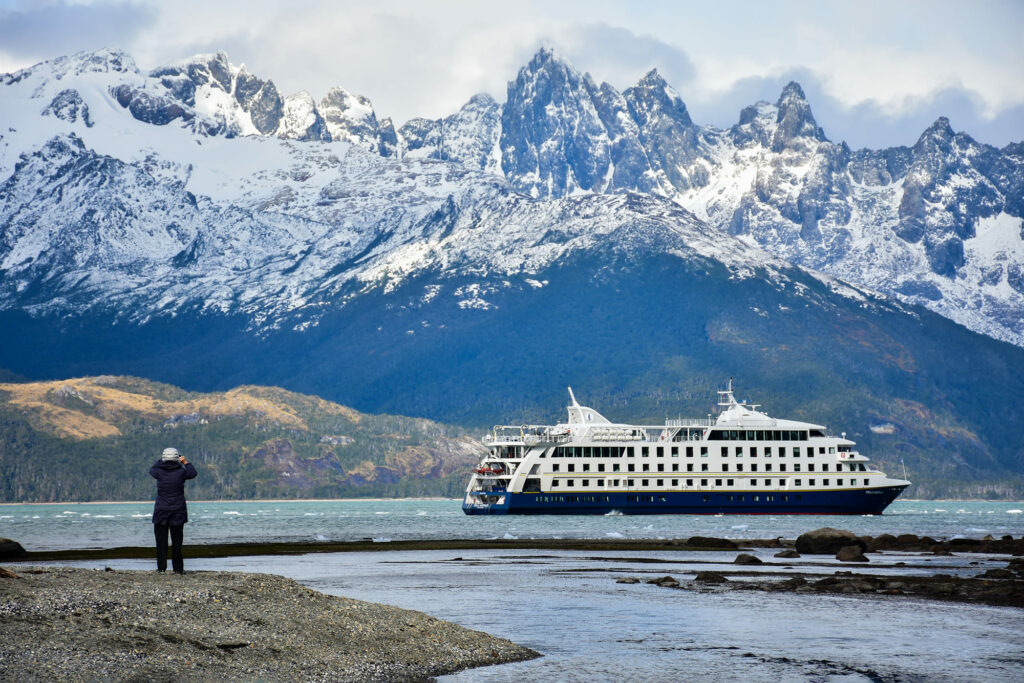
Scattered throughout the stormy seas off the southern tip of the continent, the hundreds of islands, archipelagos, channels, bays, and fjords that make up Chile’s Tierra del Fuego invite intrepid explorers to discover the region just as early adventurers like Magellan and Darwin once did: aboard a ship. Cruises and multi-day sailings like the itineraries offered by Australis and Skorpios are the best ways to reach and see many of the best sights around this far-flung marine environment.
- Grand glaciers: Choosing a smaller expedition ship that can more easily navigate narrow fjords and channels will get you right up close to the front wall of passing glaciers, like the Pia Glacier. If you’re lucky, you may even get to see a calving event as icebergs plummet off the glacier into the bay below.
- Wild whales: Along with chances to spot penguins, dolphins, sea lions, and other marine life, the waters of southern Patagonia are an excellent place to see whales in their natural habitat. Important feeding grounds like Francisco Coloane Marine Park bring together humpback, sei, and minke whales for your viewing pleasure. August, September, and October are the best months to catch a glimpse.
- Stand at the bottom of the world: Experience the thrill of standing high on a rocky promontory, with nothing but water in front of you until you reach Antarctica, and be at the literal “end of the world” on a visit to Cape Horn National Park. Located on the southernmost island in Tierra del Fuego, this headland marks the last bit of land in South America. A windy path leads to a lookout point and monument overlooking the Drake Passage, making for the perfect Patagonian photo opp.
10. Visit the giant Moai of Rapa Nui/Easter Island

Carved between 1400 and 1600 AD and weighing up to 14 tons, viewing the massive Moai stone statues of Easter Island is well worth the flight to this remote island adrift in the Pacific Ocean. Believed to represent important ancestors and placed at religious sites around the island, these sacred and ancient monoliths offer a glimpse into the history, culture, and customs of the indigenous Rapa Nui people.
Although there are some 900 different Moais dotted around Easter Island, these are some of the most impressive and important Moai sites to visit:
- Rano Raraku: This massive volcanic crater is the birthplace of nearly all of the island Moai, serving as a quarry and carving site to create the Moai before transporting them to their designated sites. Due to the extreme difficulty of moving the Moai, many fallen or incomplete ones dot the area, making for one of the greatest concentrations of the statues on the island.
- Ahu Tongariki: Consisting of 15 Moai sitting atop a ceremonial ahu stone platform, Ahu Tongariki is the largest ceremonial structure on Easter Island. Although its Moai have faced endless upheavals from being toppled during island civil wars to being swept inland by a tsunami, today they stand proudly next to a scenic beach and are one of the most-visited sites on the island due to their significance and spectacular setting.
- Ahu Tahai: Restored by archaeologist William Mulloy, Ahu Tahai is a collection of several Moai statues and ahu platforms near the town of Hanga Roa. From the restored eyes to stone hats sitting atop the Moai heads, these examples showcase how many of the Moai would have appeared soon after their carving and erection.
11. Kayak to the Marble Caves in the Aysén region
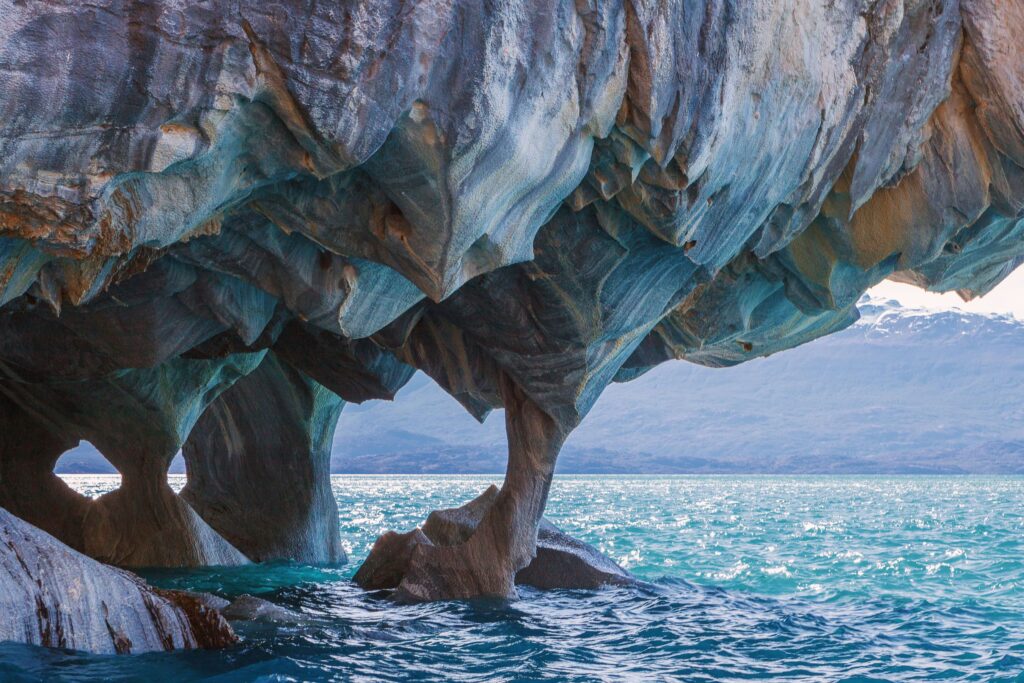
Located along a hard-to-reach stretch of shoreline on Lago General Carrera, the Marble Caves are an otherworldly warren of watery tunnels and colorful caves. Years of erosion have carved away passages in the marble rocks lining the shore, leaving sculpted marble grottos and tunnels covered in swirling shades of turquoise, blue, and green. In a kayak, you can paddle right through the caves themselves, watching as the water and light shift and illuminate the walls.
- Best time to visit: Although the caves can be visited throughout the year, the springtime melt turns the waters of Lago General Carrera into an especially dazzling shade of turquoise.
- Boats versus kayaks: Not comfortable kayaking through the caves? Not to worry; boat tours can also get close to the caves and pass through certain passages.
- Lovely lake views: The caves are only accessible by watercraft, with most tours leaving the nearby town of Puerto Tranquilo. En route to the caves, you can also admire the stunning turquoise shades of this massive lake which stretches all the way into neighboring Argentina.
12. Sip on pisco and stargaze in the Elqui Valley
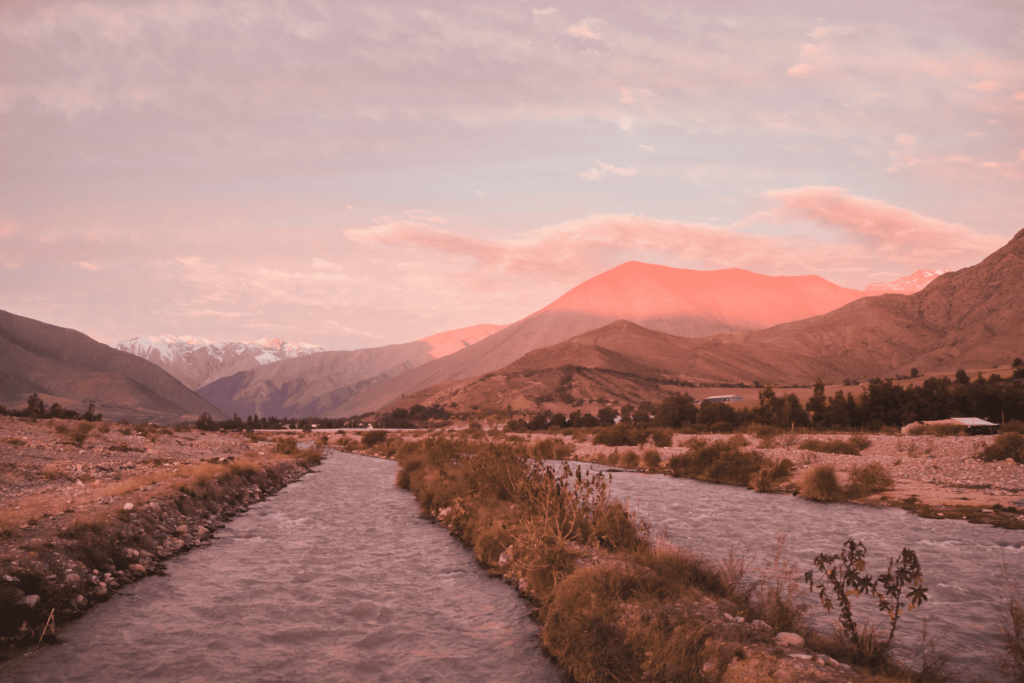
With its low light pollution, high elevation, dry climate, and more than 300 cloudless nights, northern Chile’s Elqui Valley surpasses even the Atacama as the country’s stargazing capital.
- A narrow, winding gorge of rocky slopes and lush valley floors patterned with vineyards, Elqui Valley is the world’s first International Dark Sky Sanctuary thanks to its pristine nighttime skies, making stargazing one of the hands down, best things to do in Chile.
- Where to stargaze: Visit popular tourist observatories like Mamalluca and Pangue for nighttime stargazing and astronomy tours, or book daytime visits to scientific facilities like Cerro Tololo. But truthfully, you don’t even need a telescope to appreciate the celestial dance: simply head outside on clear, moonless nights, look up, and enjoy the view. You can even stay in stargazing hotels like the Elqui Domos that come outfitted with overhead skylights.
- Home of pisco: With its abundant sunshine, the Elqui Valley is also a major wine region growing grapes to make Chile’s national drink: pisco. A grape-based spirit made from distilling fermented grape juice, the area is home to numerous pisquerias that offer both tastings and tours. At most bars and restaurants, you can also try the popular pisco sour cocktail, one of Chile’s top libations.
13. Get outdoorsy in Chile’s Lake District
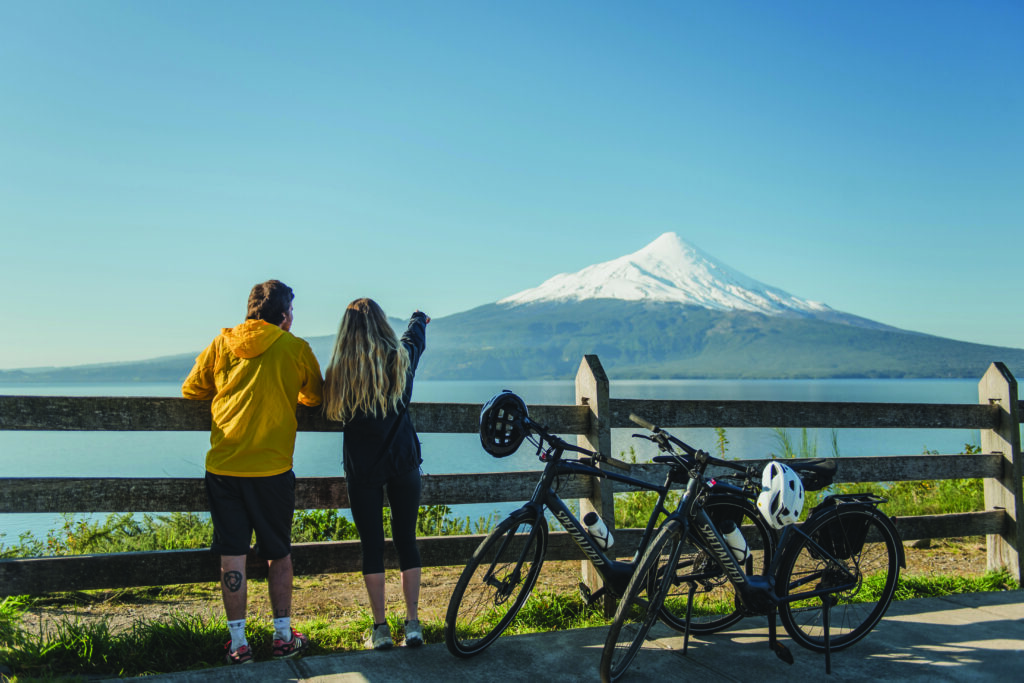
From white-water rafting down tumbling rivers to ascending the towering peaks of snowcapped volcanoes, all manner of outdoor adventure and fun can be found in the Lake District. A region of ancient forests, sparkling lakes, and volcanoes that is just as well known for its beauty as its outdoor recreation offerings, this all-natural playground is more off-the-beaten-path than the national parks of southern Patagonia, with fewer crowds and more rugged, hidden gems.
- All-season fun: It doesn’t matter what time of year you visit; the Lake District is a year-round outdoor destination. National parks and reserves like Villarrica National Park and Parque Futangue offer miles of hiking and cycling trails during spring, summer, and fall, and people come from around the world to raft down the rapids of rivers like the Trancura. Come winter, volcanic slopes turn into ski resorts, and other winter sports take over.
- Charming towns: One of the best parts of visiting the Lake District is spending time in the many picturesque towns and cities dotted throughout the region. Sitting on the shores of lakes in the shadows of volcanoes, towns like Pucon and Puerto Varas boast incredible scenery as well as historic Germanic architecture.
- Cheers to craft beers: The wave of German immigrants that came to the area in the late 1800s brought more than their building styles and cuisine: they brought beer as well. That’s why the Lake District is Chile’s top spot to find quality craft beer at breweries like Valdivia’s Kuntsmann for a refreshing draught after a long hike.
14. Ski in the Chilean Andes
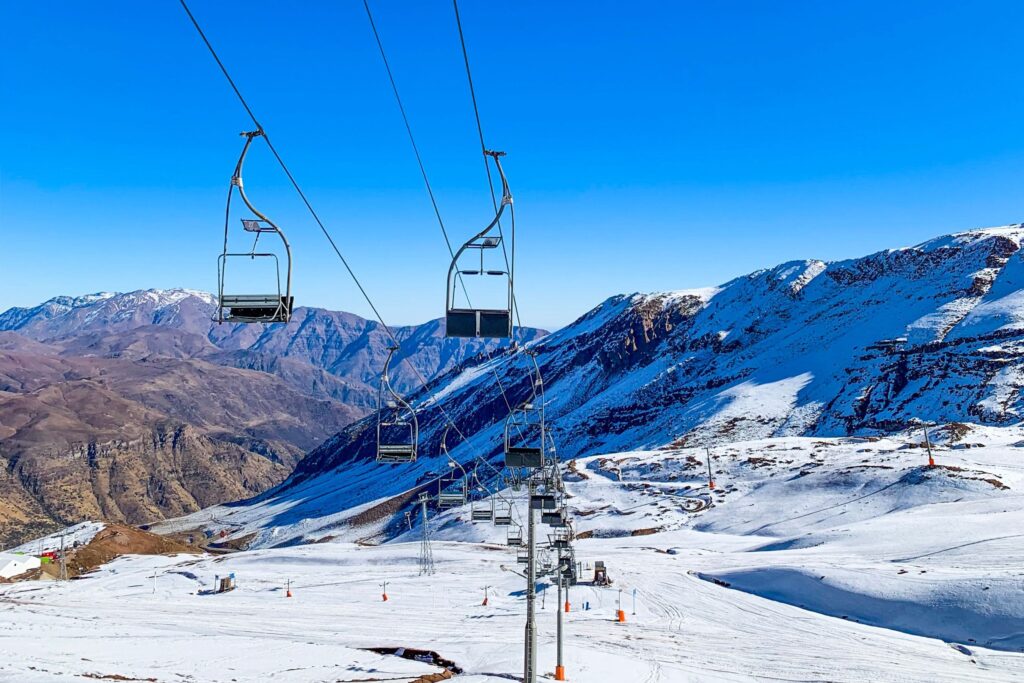
With its towering peaks, deep valleys, and heavy snowfall, the Chilean Andes offer some of the best skiing in South America. Just an hour or so outside Santiago, world-renowned ski resorts deliver downhill thrills for all ages and experience levels, with winter-wonderland views to match.
- Skiing near Santiago: Several of Chile’s top ski resorts are situated in the central Andes, just a short drive from Santiago. With a top elevation of 17,815 feet, Valle Nevado is Chile’s highest-elevation ski resort, covering 2,224 acres of skiable terrain from groomed runs to off-piste heli-skiing. A training ground for Olympians with its steep slopes and diverse terrain, Portillo is another world-renowned Chilean ski resort. Sitting at the edge of a high-mountain lake, this sunshine-yellow lodge pairs its adrenaline-filled runs with epic views of snow-covered peaks.
- Less crowds, more powder: Escaping the crowds at ski resorts close to Santiago, the mountains and volcanoes further south in the Maule, Bio-Bio, and the Lake District offer many family-friendly resorts with diverse terrain to suit all experience levels. Located on the Lonquimay Volcano, Corralco Ski Center is a popular option in the Araucania region, with an abundance of easy and intermediate routes. At Nevados de Chillan, zoom down the snowy slopes of active volcanoes on both groomed and backcountry routes like Las Tres Marias, South America’s longest ski run at eight miles.
- Après-ski soaks: Using volcanoes as ski resorts comes with more benefits than just excellent runs and great downhill terrain. All that geothermal energy also produces natural hot springs for a relaxing post-ski soak. Some ski resorts like Nevados de Chillan have their own hot springs for guests to use, drawing on naturally heated water rich with minerals and restorative properties. Even if hot springs can’t be found right by the resort, they’re never far. At Ski Pucon in the Lake District, you can head from the slopes to the springs at Termas Geometricas, a natural hot spring site hidden in a lush canyon.
15. Experience Torres Del Paine in Patagonia
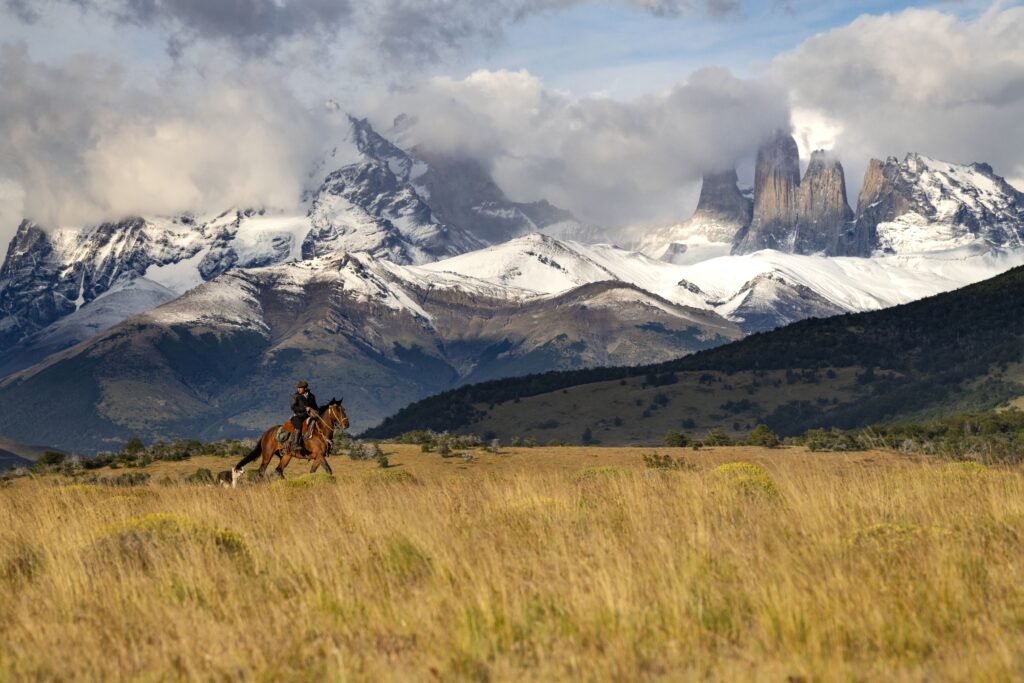
The crown jewel of Chile’s national park system, Torres del Paine National Park spans 700 square miles of windy pampas, towering granite peaks, behemoth glaciers, and turquoise lakes in the southern Magallanes region. One of the country’s most popular outdoor destinations and certainly one of the best things to do in Chile, this captivating landscape at the bottom of the continent draws travelers with its multi-day hiking routes like the W Trek, wildlife-sighting opportunities from pumas to soaring condors, and spectacular scenery.
- Connect with gaucho culture: Outdoor recreation like hiking may be Torres del Paine’s top attraction, but the region is also rich with culture worth discovering. At historic estancias, learn about Patagonia’s past as a sheep-farming giant and the gauchos, or South American cowboys, who patrolled large swathes of countryside to monitor and herd the sheep.
- Best time to visit Patagonia: The peak time for tourism in Patagonia falls during the South American summer months of December to February, when the days are the longest, and the weather is warmest. However, visiting in the shoulder season (spring or fall) brings unique opportunities as well, like seeing guanaco birthing season or viewing Patagonian landscapes awash in seasonal blooms. The trails will also be less crowded outside of summer. And, as a trend, hotels and lodges are extending their seasons into winter. Visiting in May and September offers a whimsical, snow-blanketed experience of this special region.
- Live it up at the bottom of the world: Just because you’re staying at the far southern tip of South America doesn’t mean you need to rough it. The area around Torres del Paine is home to many of Chile’s finest luxury lodges, housed in design-forward buildings with fine dining, glamorous spas, and an entire roster of daily guided excursions. Properties like Tierra Patagonia and Awasi Patagonia blend into the rugged landscape for a fully immersive experience while still offering the finest luxury amenities. If you to feel close to nature, glamp in geodesic domes or cozy yurts at EcoCamp Patagonia and Patagonia Camp.
Explore Chile on a map
Luxury private trips to Chile
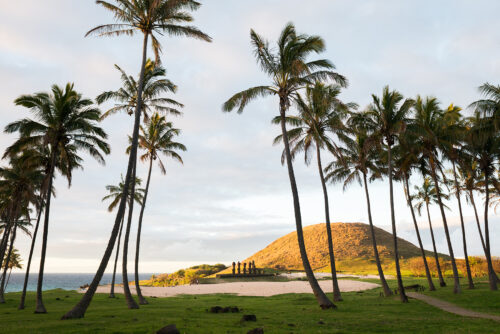
- Itinerary
Atacama & Easter Island Explored
Marvel at the mysterious Moai up-close and navigate the moon-like landscapes of the Atacama Desert
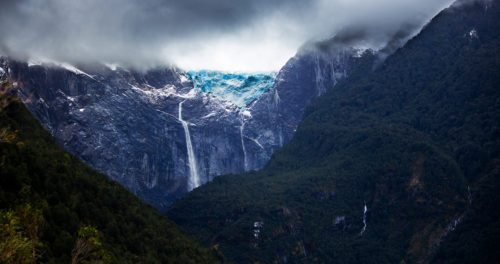
- Itinerary
Chile Tour: Patagonia Explorer
Remote and Rugged Patagonia Adventure
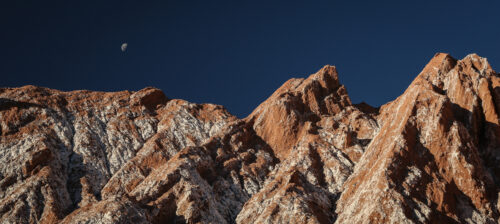
- Itinerary
Highlights of Chile
Wild Patagonia meets the lunar landscapes of the Atacama and lush wine valley of Millahue
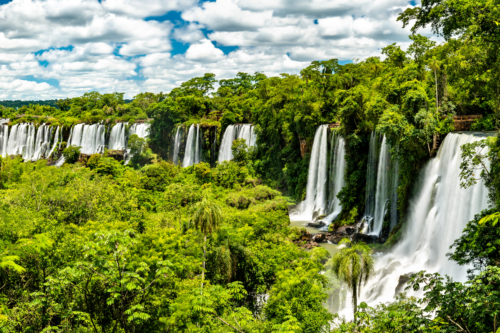
- Itinerary
Luxury South America: Best of Argentina & Chile
Luxury lodges and top experiences across South America’s most iconic regions
Read more about luxury Chile travel
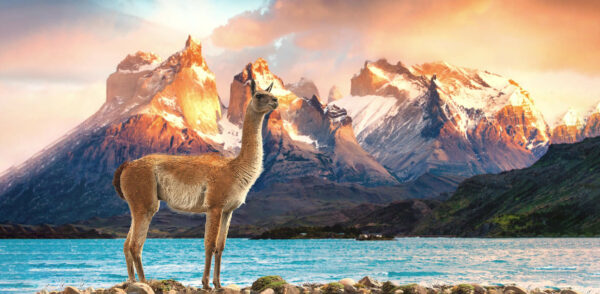
The Best Places to Visit in Chile
Chile is a 2,670-mile layer cake of landscapes. Discover Chile’s best destinations, from…

Chile: The Ultimate Santiago Travel Guide
For the longest time Chile’s capital city of Santiago sat overlooked, hidden in the…
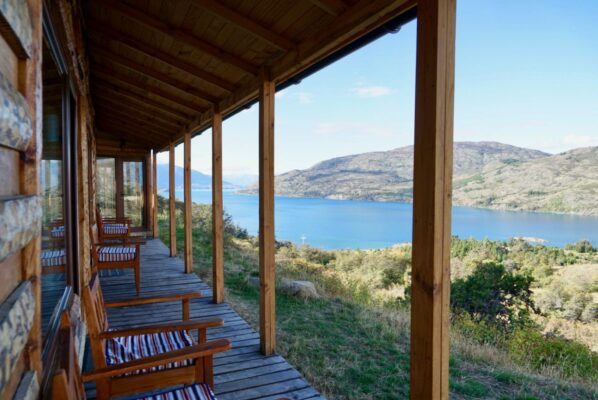
The Best Ecolodges in Chile’s Aysén Region
Whether it’s through investing in conservation initiatives, operating with a light…
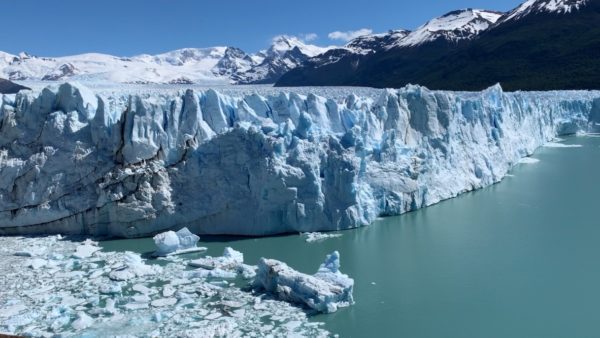
Southern Patagonia: What You Need to Know Before You Go
Discover 7+ reasons why Southern Patagonia’s stunning landscapes and active adventures…
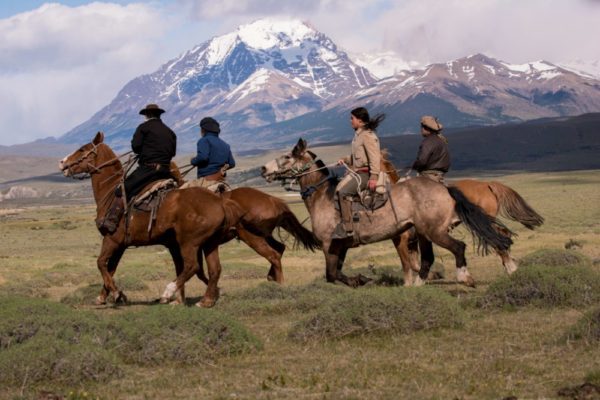
The 5 Best Luxury Hotels & Lodges in Patagonia
Discover 5 of the most incredible luxury properties in Patagonia. They’re ideally suited…
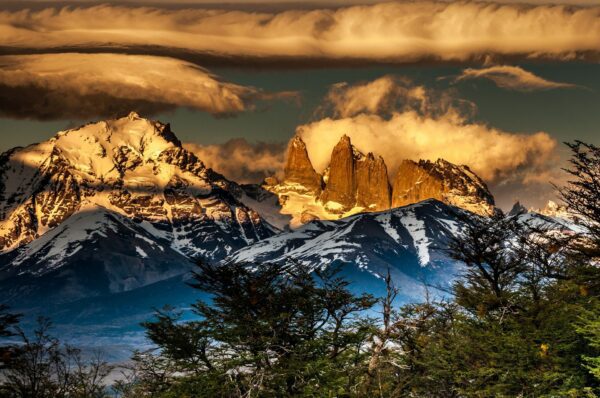
Explore Chile’s Desert, Mountains, and Lakes
Chile is an incredibly picturesque country, and here are our favorite areas and…
Plan your Trip
Ready to start planning your own incredible adventure? We make the process stress-free and enjoyable.









